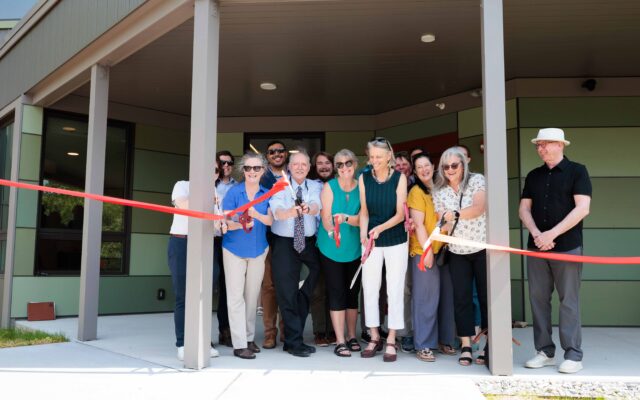This column was written by John Vogel and originally published by Valley News on August 10, 2021. John is a recently retired clinical professor from the Tuck School of Business at Dartmouth and is co-chair of the Evernorth Board of Directors.
During the pandemic, many low-wage workers, including retail and restaurant employees, lost their jobs and fell behind with their rent. The first response from the government was to declare a moratorium on evictions, in large part because of the public health implications of spreading the virus. Its second response was to allocate $46.5 billion in rental relief funds.
When the rental moratorium ended on July 31, only $3 billion of the available $46.5 billion had been disbursed. Although the moratorium was reinstated in large measure on Aug. 3, the fact that we narrowly escaped mass evictions should put the government on dramatic notice that a comprehensive solution must be found in the next 60 days.
Distributing rental assistance funds is a multi-faceted challenge. Most states do not have the infrastructure to administer the program. The program itself was hastily cobbled together during the crisis and is handicapped by glitches and ambiguity.
In an effort to preclude any appearance of impropriety while complying with program regulations, state and city governments created cumbersome forms and exacting procedures. For example, to be eligible for the emergency rental assistance program in Vermont, a renter must prove that:
■ One or more individuals within the household has qualified for unemployment benefits or experienced a reduction in household income, incurred significant costs or experienced other financial hardship due to the COVID-19 outbreak.
■ There is a demonstrable risk of experiencing homelessness or housing instability.
■ The household has an income at or below 80% of area median based on its W-2 form and pay stubs.
■ In addition, the tenant and landlord must apply together. The landlord must also agree to drop any current or future evictions, to not raise the rent before the end of the lease, and to ensure that rental units meet state building codes.
On Aug. 2, a large number of eviction notices went out. Congress was on vacation, so temporary solutions, like extending the moratorium across the nation, were no longer possible. Once again, cities and states were on their own. Stress levels for renters went through the roof. Fortunately the Centers for Disease Control and Prevention stepped in, but even its temporary fix may not hold up when challenged in court.
It is high time Congress did something more substantial to help the millions of renters who are falling behind.
Promote, simplify and help
Cities and states can do a better job of promoting their programs to renters and landlords, simplify their forms and requirements, provide help filling out the forms and increase the efficiency with which funds are dispersed. In some cases, the injection of a few thousand dollars may enable tenants to stay in their homes. However, like most one-size-fits-all solutions, this strategy may not be the most effective, either short or long term.
In 2016-17, Housing Vermont (now Evernorth) conducted a study of the underlying factors that lead to evictions. They surveyed managers of 3,013 affordable housing units and found 67 evictions. Surprisingly, most of the tenants who were evicted had a higher income. They also had longer leases, so it was clearly not a case of poor tenant selection.
The study revealed that while people may have left voluntarily or been evicted due to job loss, it may also have been due to illness, divorce, lease violation or substance abuse. A disturbing finding, highly relevant in the current crisis, was that evictions and negative exits were higher for large households. For example, 12% of 3,013 apartments were occupied by families of four or more, but 24% of evictions came from these bigger households.
Housing programs that work best over time, like the HOME Program, the Community Development Block Grant Program and Section 8 housing, have considerable flexibility. The federal government mandates some rules, like eligibility requirements, but leaves it to cities and states to determine most of the criteria.
The most effective use of housing funds in rural Indiana is quite different than the wisest way to spend money in Los Angeles. When Congress reconvenes, rather than just exhorting states to disperse the remaining $40-plus billion more quickly, why not allow greater flexibility? Let local governments figure out the best way to reduce the eviction rate for low- and moderate-income renters.
For example, instead of paying back rents, some of the funds could be used to buy up existing apartments. Many landlords might be relieved to get out of the residential rental business and walk away with a modest profit — a more appealing prospect than struggling to collect rent, evict tenants and repair apartments. Ideally, the new owners would be nonprofits or other entities with a public service mission. Between current low interest rate mortgages and all this federal funding, they could acquire a significant amount of housing and manage it so that low- and moderate-income families could afford rent in both the short and long term.
Imagine, a rental market where millions of apartments become permanently affordable homes.
John Vogel, of Norwich, is a recently retired clinical professor from the Tuck School of Business at Dartmouth College, where he taught real estate and nonprofit management. He is co-chair of Evernorth, which develops, manages and finances affordable housing and community development in Maine, New Hampshire and Vermont.
Link to the full column can be found here: https://www.vnews.com/Column-What-will-happen-now-that-eviction-ban-has-been-lifted-41902496?fbclid=IwAR3XY_ARx_OAB5_aTGXIK5LC2cDPQRQC1i1e2DpN8-woalGUMSlSGlPNhL8




